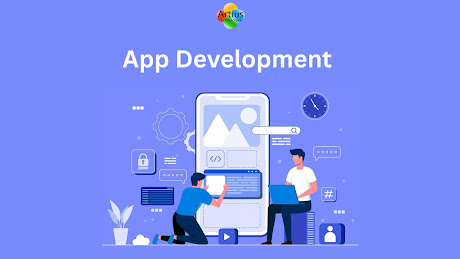 |
| App Development Agency in Gurgaon |
In today's digital era, mobile apps have become an essential part of our daily lives. From ordering food to managing finances, apps are transforming industries and consumer experiences. If you’re considering developing an app, this guide will walk you through the entire process, from ideation to launch.
1. Understanding the Purpose of Your App
Before diving into development, define the core purpose of your app. Ask yourself:
- What problem does my app solve?
- Who is my target audience?
- What makes my app unique compared to existing solutions?
- A well-defined purpose will help streamline the development process and ensure that your app meets users' needs effectively.
2. Choosing the Right Platform
There are two primary platforms for mobile apps:
- iOS (Apple App Store) – Known for its premium user experience and strong security.
- Android (Google Play Store) – Offers a larger user base and flexible customization options.
- You can also consider cross-platform development using frameworks like Flutter, React Native, or Xamarin, allowing your app to run on both iOS and Android with a single codebase.
3. Designing an Engaging UI/UX
User experience (UX) and user interface (UI) play a crucial role in an app's success. Ensure that your app has:
- A simple and intuitive navigation flow.
- Appealing and responsive design.
- Quick load times and seamless interactions.
- Tools like Figma, Adobe XD, and Sketch can help create stunning prototypes and wireframes before actual development.
4. Choosing the Right Technology Stack
Your choice of technology stack depends on your app’s complexity and platform. Some common tech stacks include:
- Frontend: React Native, Swift (iOS), Kotlin (Android), Flutter
- Backend: Node.js, Django, Firebase, Ruby on Rails
- Database: MySQL, MongoDB, PostgreSQL, Firebase
- Cloud Services: AWS, Google Cloud, Azure
5. App Development Process
The development process can be broken down into the following phases:
- Planning & Research – Define features, target audience, and goals.
- Wireframing & Prototyping – Create visual representations of your app’s layout.
- Development – Write the actual code for the frontend and backend.
- Testing – Identify and fix bugs using manual and automated testing.
- Deployment – Publish your app on the App Store or Play Store.
6. Ensuring Security and Performance
Security and performance are key factors in user satisfaction. Ensure that your app has:
- Secure authentication (OAuth, biometric login, two-factor authentication)
- Data encryption to protect user information
- Optimized code and caching for fast performance
7. Marketing and Monetization Strategies
A great app is only useful if people know about it. Use these strategies to market your app:
- ASO (App Store Optimization): Optimize your app title, description, and keywords.
- Social Media Marketing: Promote your app through Instagram, Facebook, and Twitter.
- Influencer & Content Marketing: Leverage bloggers and YouTubers to promote your app.
- Paid Advertising: Run Google Ads and social media ads for wider reach.
- Monetization strategies include:
- In-app purchases – Selling premium features or digital goods.
- Subscription model – Recurring revenue from users.
- Advertisements – Displaying ads within the app.
8. Post-Launch Maintenance and Updates
Once your app is live, continuous updates and maintenance are necessary to retain users. Keep track of:
- Bug fixes and security patches
- User feedback for improvements
- Regular updates with new features
Conclusion
App development in 2025 requires a strategic approach, from conceptualization to post-launch maintenance. Whether you’re building a simple mobile tool or a complex enterprise app, following these best practices will ensure success. Start with a clear idea, choose the right technology, prioritize user experience, and market effectively to make your app stand out in a competitive digital landscape.
Are you ready to create your next big app? Let’s turn your vision into reality!
Contact us today and let our experts help you achieve better results!
Website: https://artiustechnologies.com/
Call: +91-78380-76000
